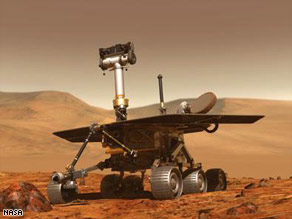University of Southern California researchers provide a challenge to the classic economic model of information manipulation, in which knowing more than anybody else is the key to influence. Instead, economists Isabelle Brocas and Juan D. Carrillo present a situation -- commonly observed in real life -- in which all parties have access to the same information, but one party still manages to control public opinion.
For example, a pharmaceutical company such as Merck may be obliged to make public the findings of all studies related to a new drug. Preliminary trials may indicate no short-term side effects, and the company may elect not to perform follow-up trials before releasing the drug on the market.
"Optimally, you want to provide enough information so the other party reaches a certain level of confidence, but stop once you reach that level," Brocas explained. "Otherwise, it may be the case that more information causes the confidence level to go down."
The study, "Influence Through Ignorance," is the first to thoroughly examine situations in which power comes from controlling the flow of public information, as opposed to the possession of private information.
As Brocas and Carrillo explain, there are secrets -- facts that are deliberately withheld -- and there are facts that are not known to anybody.
"It's not necessary to have extra information," Brocas said. "You can induce people to do what you want just by stopping the flow of information or continuing it. That's enough."
Notably, the party manipulating the flow of information must deliberately choose to remain uninformed as well -- which can backfire.
In Merck's case, a study released five years after the drug was introduced on the market showed that taking Vioxx significantly increased the risk of heart attacks. Merck funded the study, which had been intended to see if the painkiller was also effective against colon polyps.
Now, embroiled in a $4.85 billion settlement, the company claims that Vioxx poses no statistically significant long-term risk to the heart once it is no longer taken. This claim is disputed: Merck stopped monitoring patients after only a year, discontinuing the study once the drug was taken off the market.
Similarly, the researchers explain, the head of a council may terminate discussion and introduction of new evidence about, say, whether to continue searching for weapons of mass destruction. Calling for a vote when sentiment seems biased in a certain direction effectively curtails how much all members, including the chairperson, know about the issue at stake.
"Overall, the ability of to control the flow of news and remain publicly ignorant gives the leader some power, which is used to influence the actions of the follower," the researchers wrote. "Our result suggests that the chairperson, the President and media can bias the decision of the committee, electorate and public by strategically restricting the flow of information."
Brocas and Carrillo are in the midst of a follow-up to the study that gauges how well individuals intuitively understand the "influence through ignorance" phenomenon: "We're interested in whether people understand their ability to manipulate information and if they do it optimally," Brocas said.
The paper also provide implications for several important variants, such as how public opinion is affected when there is more than one source of information available to everyone and it is not excessively costly to obtain.
Competition, supported by media diversity and public sources of research funding, not only induces outlets to release more information but also causes the "influence through ignorance" effect to diminish -- and under certain circumstances to vanish -- the researchers found.
Journal reference: Brocas, Isabelle and Juan D. Carrillo, "Influence Through Ignorance." The RAND Journal of Economics: 38:4; 931-947. DOI: 10.1111/j.0741-6261.2007.00119.x
Adapted from materials provided by University of Southern California, via EurekAlert!, a service of AAAS.
Original here







